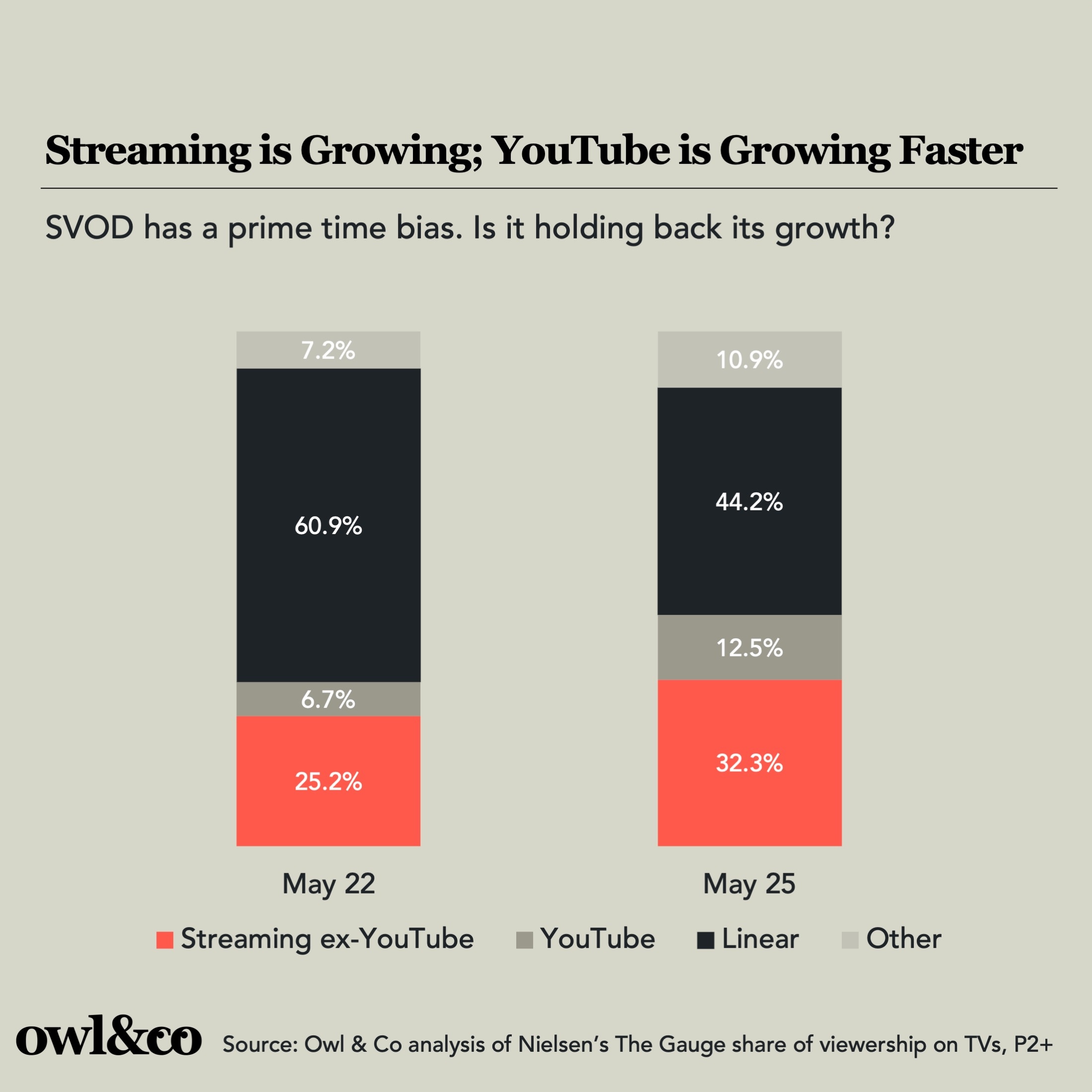By Hernan Lopez. Companies mentioned: Amazon Prime Video, HBO, Hulu, Netflix, Peacock, Spotify, YouTube.
Questions answered: With overall engagement a zero-sum game, how are different streamers thinking about gaining time spent? How much of Spotify’s Gross Margin comes from premium, and why did it just make its free product better?
In May 2025, streaming hit a historic milestone in the U.S., eclipsing linear television’s share of viewing for the first time, according to Nielsen’s The Gauge: 44.8% for streaming vs. 44.2% for broadcast and cable combined.
Compared to May 2022, streaming gained 13 share points, driven by more services, more shows, and more subscribers. But one service grew faster than all others.
However, I had a hunch: that by and large, the shift towards streaming did not play out evenly throughout the day. As I wrote about last month, when Netflix proclaimed in 2013 they wanted to ‘become HBO,’ they inadvertently inherited a bias towards serialized, character-driven programming, which other streamers have picked up (although none rely as heavily on serialized TV as Netflix; we’ve shared the data with Owl & Co clients).
While Netflix has moved past the goal of becoming HBO, the bias towards serialized television remains—and, within it, a bias towards television designed to be watched at night.

